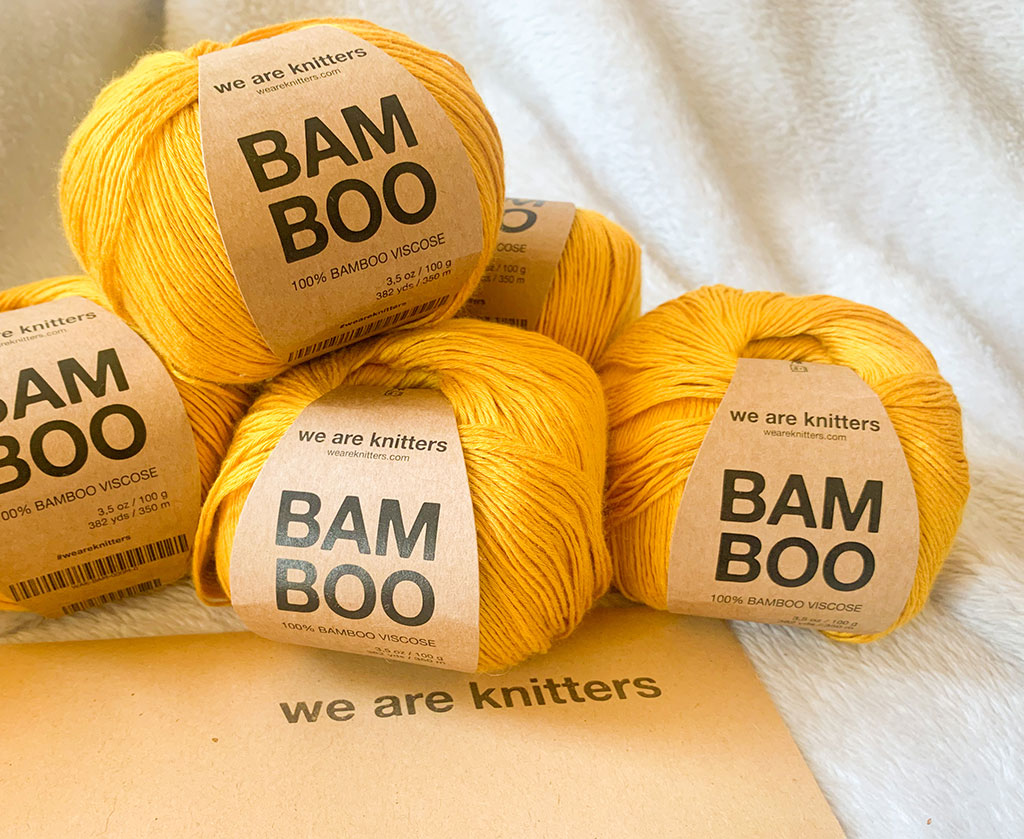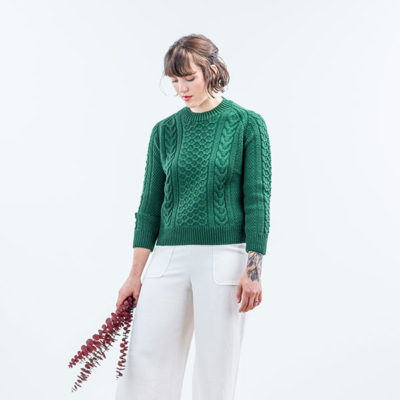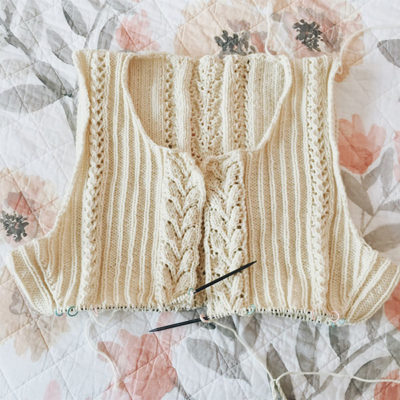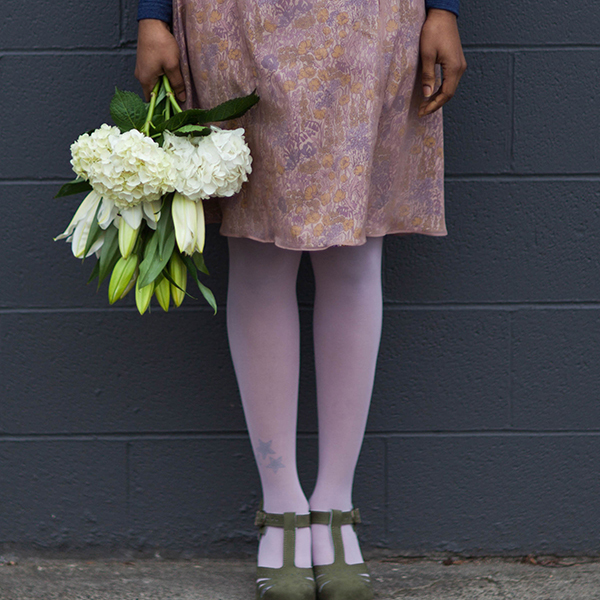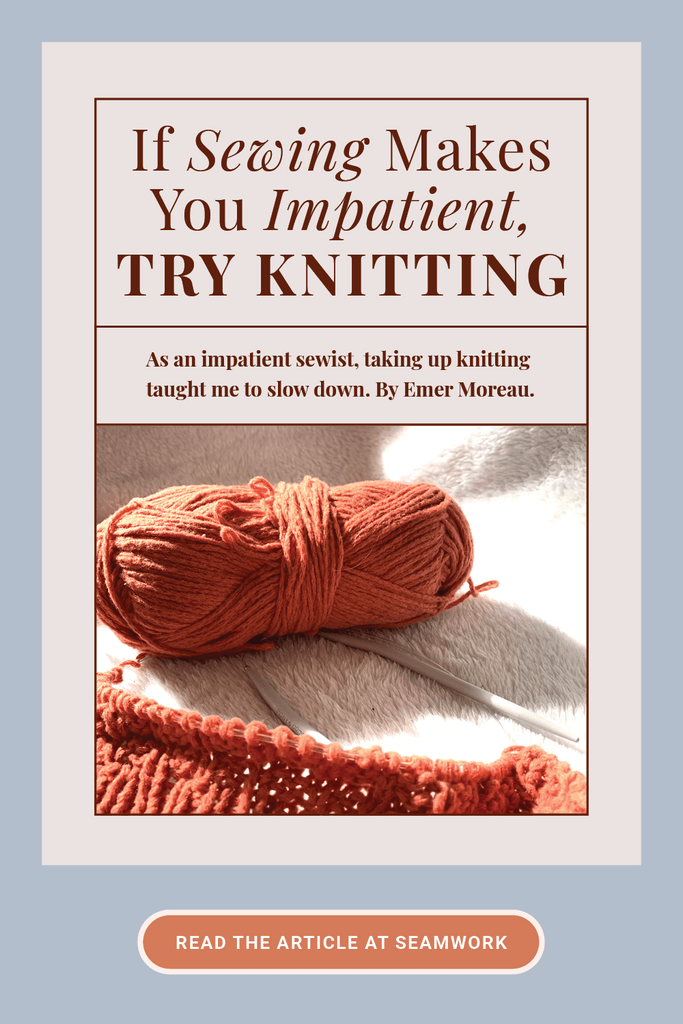I am not a patient person. I took up dressmaking around this time last year, not to force myself to slow down and appreciate traditional craft, but because lockdown here in Ireland had me bored, restless, and fidgety, trying to finish my second year of college from my bedroom. So keeping my hands–and my mind–busy was a welcome salve for the endless days of the pandemic.
I tried my hand at my mother’s sewing machine and was quickly besotted with the craft. I love clothes and fashion, and I reveled in the ability to fit various pieces exactly to my body shape. But I didn’t have an epiphanic moment of thinking: slow fashion is the best!
Sewing Doesn’t Relax Me
Sewing doesn’t relax me. Rather, it gives me a rush of vexed adrenaline. Cutting out patterns? Faff. Figuring out sizing? Laborious. Toiles? Never heard of her.
Once I have my pieces cut out, and I am somewhat certain that what I’m setting out to make will fit me, I work fast. I want results now. I don’t exactly cut corners, and it’s not as though everything I produce is poorly made, but I certainly could have taken more time.
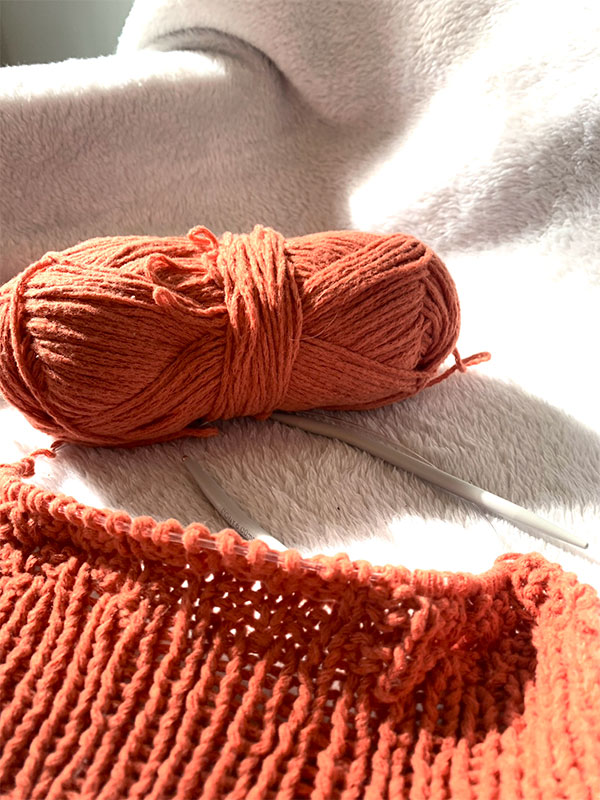
My poor aforementioned mother, who taught me the basics of dressmaking beyond what I had already learned from home economics, was befuddled when I began to produce garments at a rate of knots that didn’t look like they were whipped up at the speed of light.
Earlier this year, I moved out of my family home into student accommodation and, after much dithering, I decided not to take my sewing machine with me. I was morose. I pined for the whirring and clicking of a busy needle. I yearned for the endlessly satisfying sound of sharp scissors cutting into a length of fabric. Most of all, how was I supposed to cope without adding to my wardrobe every other day?

Trying a Different Set of Needles
I learned to knit as a child, but until that point, I didn’t care much for the craft. So slow! So detail-oriented! But I had no sewing equipment with me, and Ireland was in lockdown once again, so frenetic boredom was creeping back in. As I packed the car for the move, I grabbed the one pair of knitting needles I owned along with yarn for a project that never saw the light of day and decided I would give it a go.
The first thing I’ll say about being a new knitter is: I cheated. While I may not have enjoyed it at the time, learning the basics at a young age did solidify my understanding of the techniques that I’m not sure I would have picked up so easily as an adult. While it didn’t feel completely natural to hold the needles in my hand, it did feel somewhat familiar.
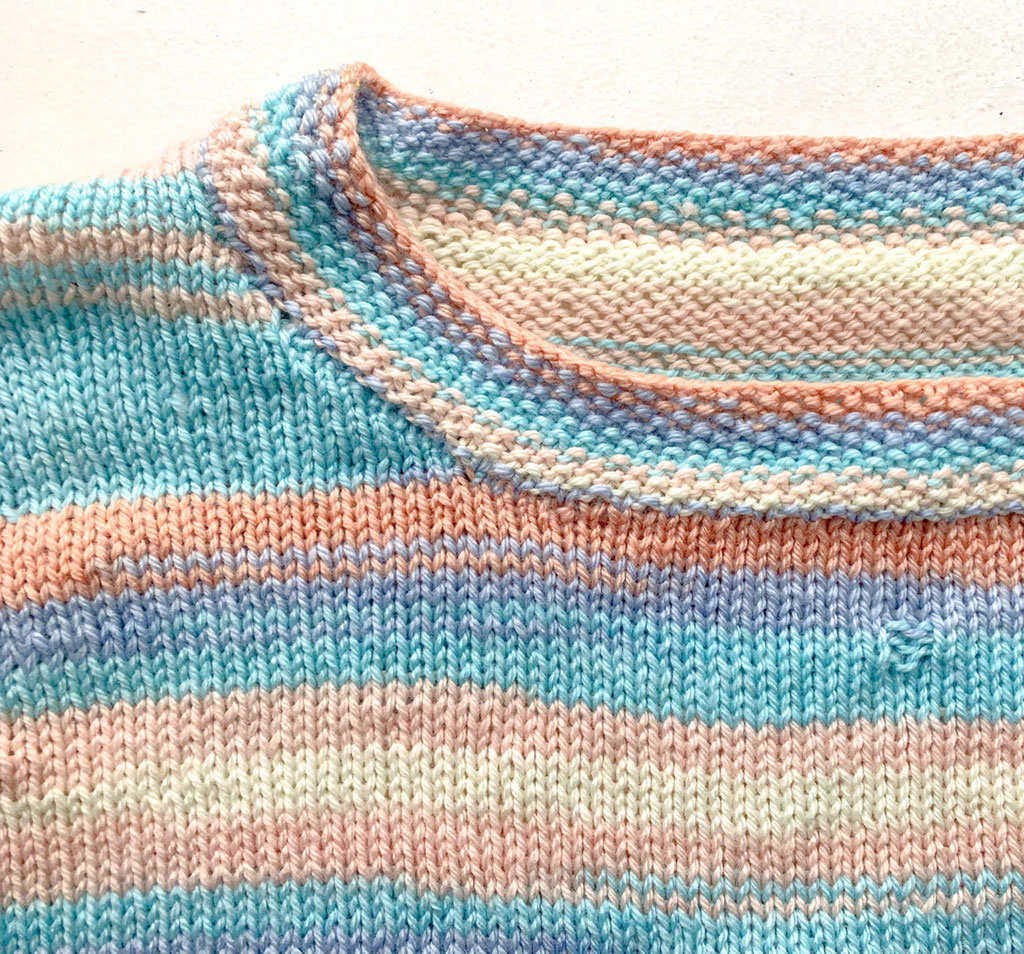
A Different Kind of Slow Craft
Learning to knit is slow–there’s no getting around it. Because, much like sewing, it’s about so much more than just the physical motions of knitting. Casting on–which is actually creating the stitches at the beginning of a project–is a fiddly technique that should probably be left further down on the list of things you have to learn to begin knitting. Since there’s no way to conjure stitches onto your needle (at least that I’ve heard of), it’s an unfortunate prerequisite.
knitting is infinitely more relaxing than sewing–and, dare I say, more satisfying.

Beyond that, there are different yarn types to grapple with, the fiendish issue of tension and swatching, and—the ultimate gripe—knitting a garment is painfully slow. It’s hard to put a time frame on it, because I could spend a whole evening knitting one day and not pick up my work another day. For example, I bought yarn for a sweater in mid-February and finished it about a month later. I could probably sew a sweater in two days, so the process of knitting that sweater felt eternal. I thought I was never going to finish. The sense of achievement of completing a sleeve quickly wears off when you remember that you still have to make a front and back, as well as seam the darn thing together.
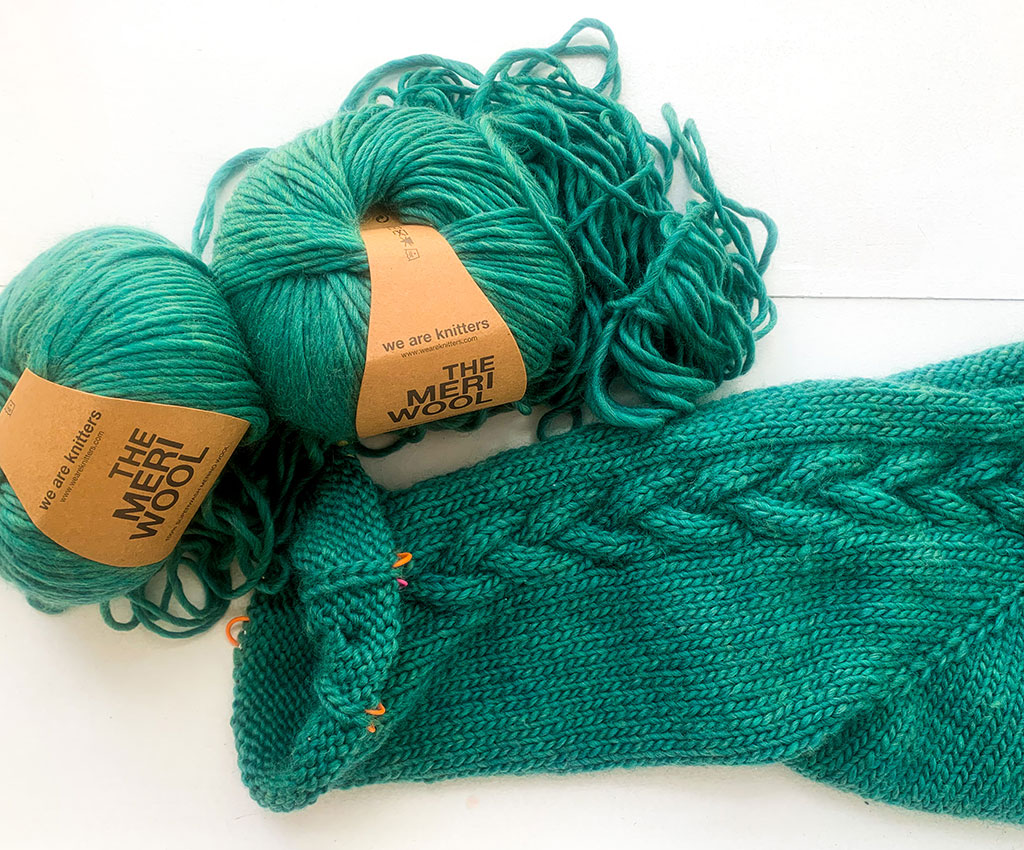
Find What Relaxes You
Once you learn the basic techniques, knitting is infinitely more relaxing than sewing–and, dare I say, more satisfying. The motion of working stitch after stitch is so calming, commanding just enough of my attention to stop the gloom of the current state of the world occupying my thoughts. It’s soothingly repetitive and forces me to actually slow down and think about what I’m doing rather than racing to finish so I can have something to show for it.
It’s also a much more contained craft than sewing: beyond the odd tangled ball of yarn, it’s considerably less messy and overwhelming than sewing. From cutting out patterns to the sound of a machine, sewing can be really overstimulating. But once you’re in the “knitting zone,” it’s almost therapeutic. No stray threads, no angry mechanical noises from a thick fabric getting stuck in the feed dogs, no running back and forth to the ironing board.
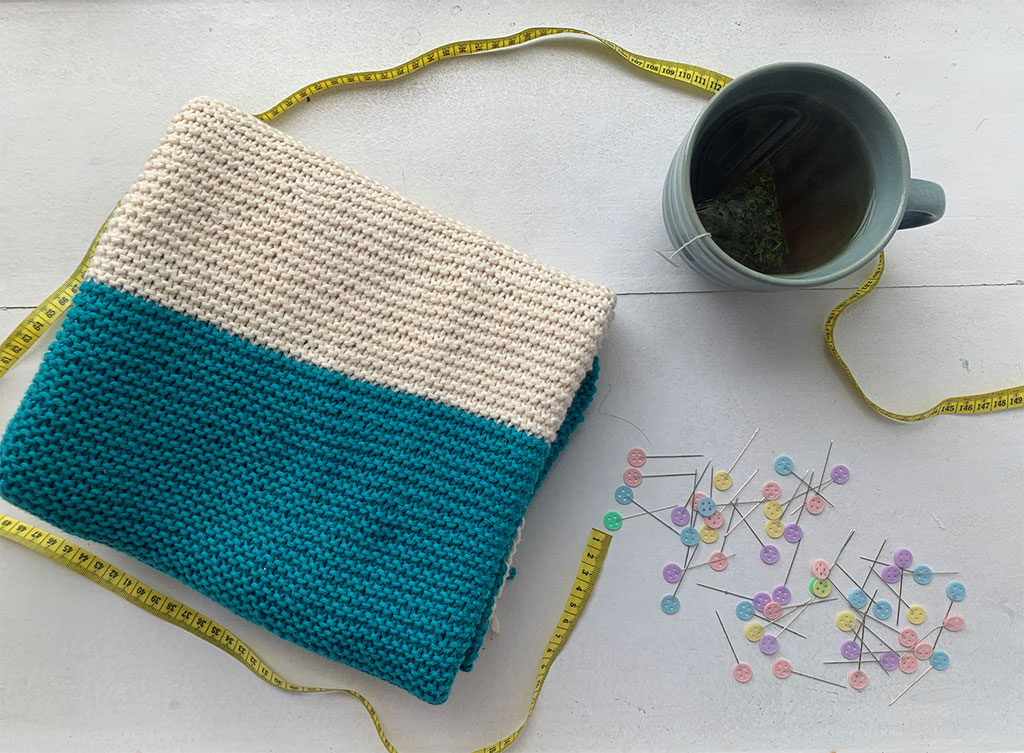
Can You Sew in Bed?
We all find different parts of crafts relaxing. I plan to return to sewing, but having taken up knitting, I’ll approach sewing with a new attitude. I need to slow down and not have my pulse go up every time I sit in front of my sewing machine. I can’t say I prefer knitting over sewing either, but I will point this out: you can’t sew in bed.
